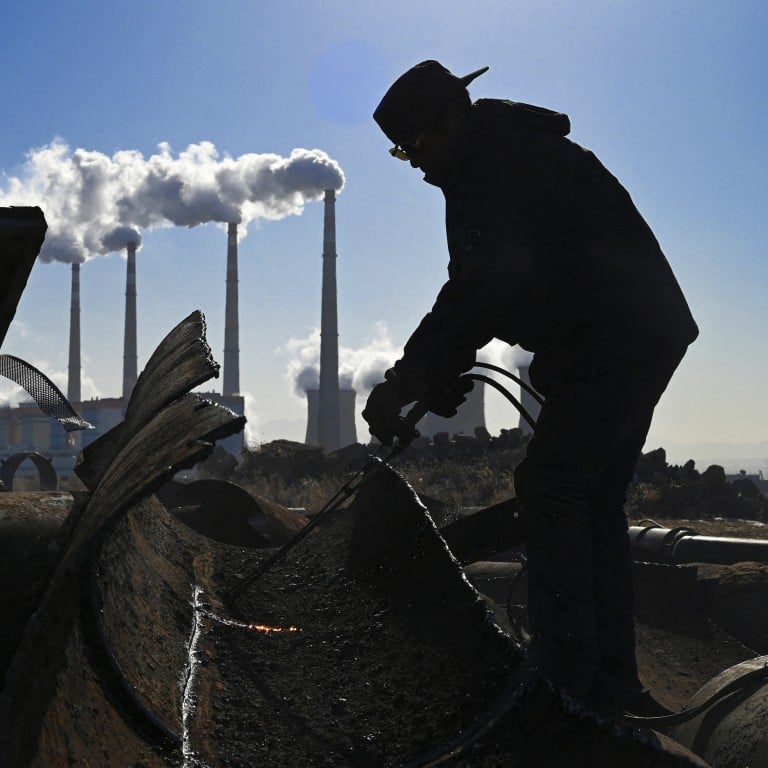
Explainer | What is the China Certified Emission Reduction scheme and why is it important for Beijing’s carbon neutral goal?
- CCER is expected to play a significant role in achieving emissions cost reductions and renewable energy goals
- The scheme’s relaunch will continue to boost the demand for offsets, Refinitiv analyst says
Beijing is expected to relaunch the China Certified Emission Reduction (CCER) scheme, its voluntary carbon credits plan, in 2022, nearly five years after it was terminated.
Here is what you need to know about the CCER scheme and its expected relaunch.
What is CCER?
CCER refers to emissions reduction activities conducted by companies on a voluntary basis that are certified by the Chinese government. Such activities include renewable power generation and waste-to-energy projects, as well as forestry projects.
In 2012, the National Development and Reform Commission (NDRC), China’s central economic planner, published a set of interim measures to provide guidelines for the issuance of CCERs and to promote voluntary participation in carbon emissions reduction trading activities. According to the NDRC’s measures, domestic and foreign institutions, companies, communities and individuals are eligible to participate in transactions relating to voluntary emissions reductions of six types of greenhouse gases, including carbon dioxide, methane, nitrous oxide, hydrofluorocarbons, perfluorocarbons and sulphur hexafluoride.
Why was it suspended?
In March 2017, the NDRC issued a notice highlighting the fact that the CCER was witnessing a low trading volume and lack of standardisation in carbon audits. All CCER registrations were suspended at that time until further notice.
“A paradox has emerged under the current national ETS setting, with fossil-fuel-based IPPs [independent power producers] gaining benefits while renewable companies earn none,” Dennis Ip, regional head of utility research at Daiwa Capital Markets, said in a report recently.
Under the current situation, efficient IPPs benefit from the national ETS because they can earn an income by selling extra CEAs to less efficient IPPs. However, due to the suspension of CCER applications, renewable firms would have no income from their new capacity.
“We do not believe (it) was the intention of MEE [Ministry of Ecology and Environment] in the setting-up of the national ETS in 2021,” Ip wrote in the report. “Therefore, a redistribution mechanism will have to be put in place, in our view, to translate carbon income from IPPs to renewable gencos [generation companies]. On top of auctioning, CCER will be another important building block for such redistribution.”
What could happen after its relaunch?
In November 2021, the State Council announced that the Beijing Green Exchange will host the national trading platform of CCERs and that the exchange will also be open to global investors, and upgraded to be China’s green financing hub.
In an interview in January, Lai Xiaoming, chairman of the Shanghai Environment and Energy Exchange, which oversees the national ETS, said the government was actively preparing for the relaunch of CCER in 2022 and the relevant project filings and issuances.
“The relaunch of CCER will continue to boost the demand for offsets,” said Lin Yuan, lead China analyst at data provider Refinitiv.
Lin estimated that after the relaunch, the supply volume of CCERs would be above 300 million tonnes, but the actual amount would still depend on the scope defined in the final CCER document.
Refinitiv expected that after the relaunch there will be two types of CCERs – one that can be used for national ETS to offset 5 per cent of companies’ compliance obligations, and another that cannot be used like this. The supply volume of the first type will be strictly controlled regarding their types, vintages, project qualities and market supply-demand balance. The second type will be much broader and entities without compliance obligations can use these to voluntarily offset their carbon footprints, according to Refinitiv’s Lin.
Low trading volumes will no longer be a concern for restarting the CCER. The inclusion of more energy-intensive sectors to the national ETS in 2022 is likely to drive up the trading volume, according to Daiwa.
However, there’s still a lack of clarity over the design and restart of CCER, and how it can be incorporated into the ETS scheme remains a challenge.
Daiwa warned that the CCER mechanism was still financially immaterial for both coal-fired IPPs and renewable IPPs at present. Based on existing rules, in China, only wind and solar projects with an internal rate of return (IRR) of lower than 8 per cent are eligible for CCER applications, which means only new renewable projects with low IRR hurdle rates can potentially benefit from the future relaunch of the CCER, while the vast majority of renewable projects in operation for IPPs may not be eligible, according to a Daiwa report published this January.
“Loose requirement of offset projects could lead to an oversupply of offsets without driving carbon reduction, and also bring down offset prices, reducing the incentives to invest in low-carbon technology,” said Jia Jingwei, a research associate of sustainable finance at Fitch Ratings.
Analysts also hope that Hong Kong-based and overseas companies could participate in the CCER scheme by integrating CCERs that meet international standards as part of their overall carbon-offsetting strategy in the future.
Last August, China’s carbon market completed its first cross-border transaction, with an institution and an individual from Hong Kong buying nearly 10,000 tonnes of CCERs from a solar power project in the Kubuqi Desert.
“Financial institutions could take a page from mature carbon markets and adopt a bottom-up, proactive approach to build a regulated, robust CCER offshore pricing benchmark, with a three to five years forward price curve,” said Jeff Huang, founder of AEX Holdings, an Asian energy trading firm based in Hong Kong.





